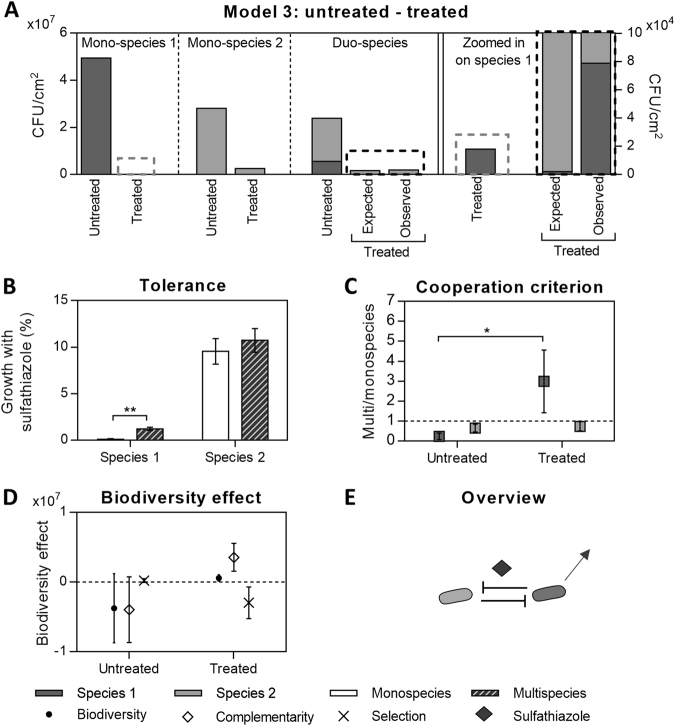Fig. 6.
Model 3: a Number of cells of each species in monoculture and coculture biofilms, grown in the absence and presence of sulfathiazole treatment. The right part of the graph zooms in on the amount of biofilm formed by species 1 in treated monoculture and duo-culture: after treatment the growth of species 1 in duo-culture exceeds its growth in monoculture. b Tolerance = ratio between the number of biofilm cells with and without sulfathiazole treatment, determined for each species in monoculture and coculture conditions. Species 1 shows a higher tolerance within the coculture biofilm, whereas there is no difference for species 2. c Cooperation: after treatment species 1 grows better in coculture than in monoculture, whereas there is no difference for species 2. This is consistent with commensalism. d Biodiversity effects in the absence and presence of treatment of the coculture biofilm: negative complementarity before treatment becomes positive. e Overview: species 1 becomes more tolerant in the presence of competing species 2. The growth of species 1 in the treated coculture biofilm even exceeds its monoculture growth, suggesting induction of specific tolerance phenotypes. Results show the average of three biological replicates, except a, which shows one representative biological replicate. Error bars show the standard deviation of the repeats. Significant differences were examined using unpaired t-tests with Bonferroni correction for multiple comparisons (*P < 0.05, **P < 0.01)

